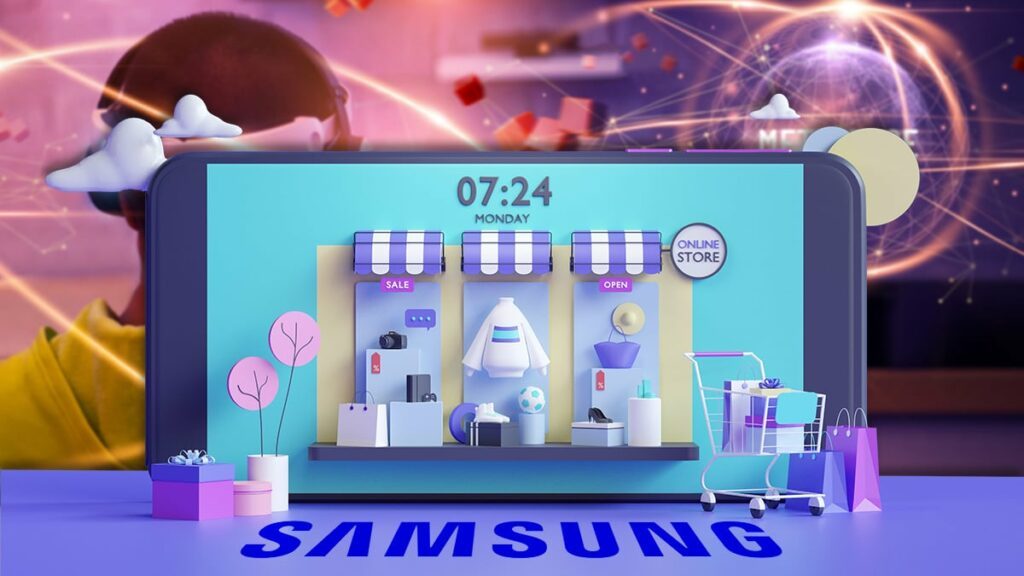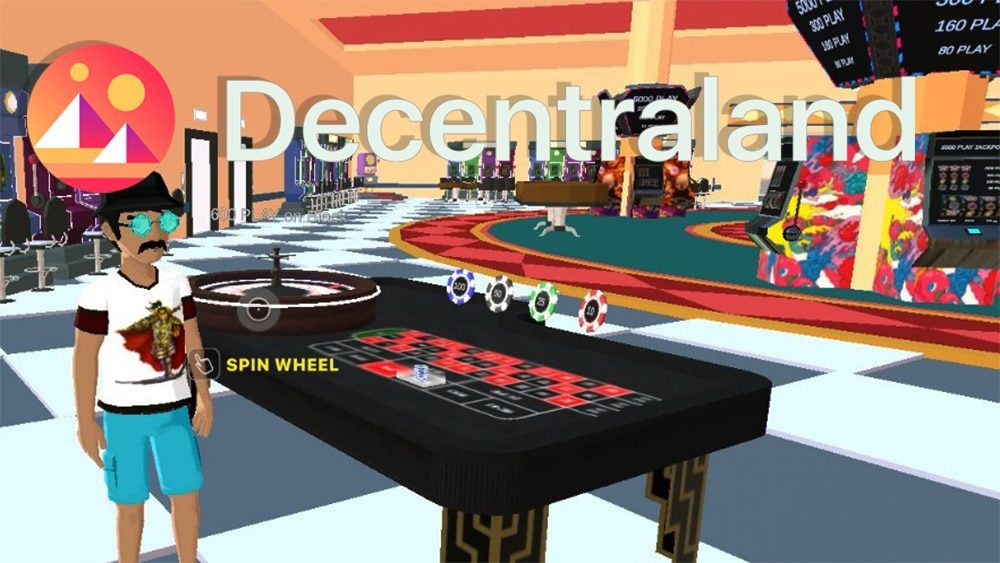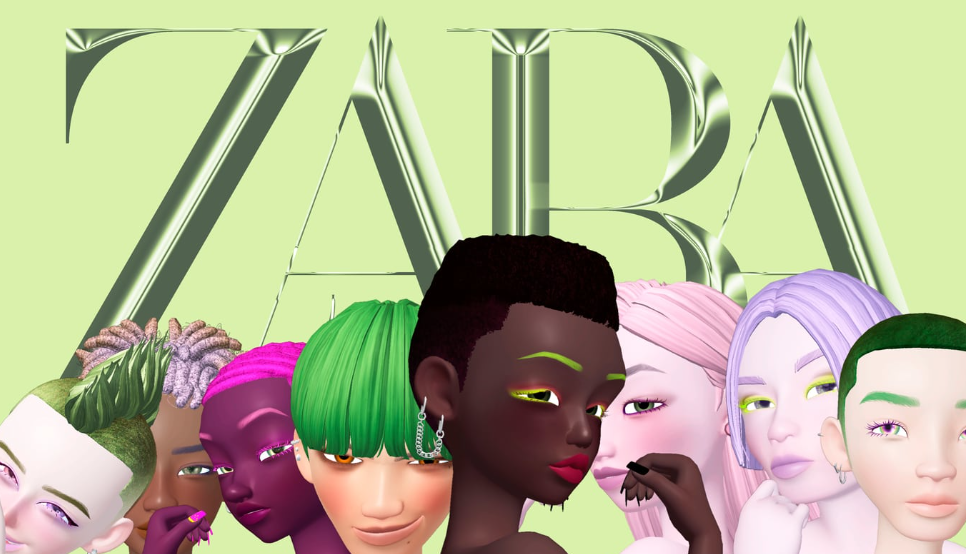The Metaverse: Virtual evolution under construction
published on 01.11.22
A new world is in the making. Instead of navigating a flat internet, there will come a time when we will enter and interact in a virtual universe, and it will change everything: from education and entertainment to communication between people. We will cease to be spectators and become protagonists, enjoying immersive experiences through our avatars. We will perform near-physical activities, and new businesses and sectors will emerge that are currently in the process of being defined. The digital future has its own name: the metaverse. Staying on the sidelines is not an option.
Imagine a city whose expansion is measured not in square meters but in pixels; pixels that only exist in cyberspace, but are still bought and sold at extortionate prices. Their owners use them as a business platform to sell any product or service that can exist in the real world: visiting a museum, showing a movie, attending a live concert or as the headquarters of a large company. A virtual world made in the image of the real one, where parallel lives can be built and lived. The metaverse – beyond the universe – is not science fiction; it is a digital revolution that has already begun and that experts say will transform the way we interact as a society in the coming decades.
What differentiates the use of current technology from the metaverse is clearly the concept of immersion. We will immerse ourselves thanks to applications and devices, we will transfer our consciousness and it will become our reality. To give us an idea of its potential, the booth that provided the opportunity to experience this immersion was the highlight of the last Mobile World Congress, and our city also recently hosted GM Barcelona, the first event in the country to talk about the metaverse and how brands should integrate it into their communication strategy.
In other words, it is still in the future, but the concept or idea is very much part of the present. The Top Digital Trends 2022 study, conducted by IAB Spain, is already talking about this new reality and considers the metaverse to be a result of the evolution of social networks. The speed at which technology changes, social behaviors and trends related to this world will set the pace of this revolution. The study analyzes and investigates topics such as virtual goods (NFTs), augmented reality, virtual influencers and the creation of experiential content. There are many new concepts that will soon become part of our day-to-day lives.
WE WILL START BY PLAYING
The gaming sector is already at the forefront and will be the first to reach the peak of the metaverse. Take, for example, Steven Spielberg’s science fiction movie Ready Player One (2018), based on the novel by Ernest Cline; or Steven Lisberger’s Tron, shot in 1982; this cinematic vision is beginning to become a reality. Today, many video games such as Fortnite and Pokemon Go already offer the possibility of immersive experiences through external devices, such as augmented reality glasses and handheld controllers.


Moreover, Fortnite is also a clear example of how big brands are committed to being inside the game, for instance Nike sold sneakers as virtual goods, and Carrefour created a game within the game called Healthy Map in which you can eat healthily to get “more life”. Other brands such as Fanta and Samsung are also investing in this video game. All this means that the ingredients are already there, but there is still a long way to go before we can talk about the metaverse. For example, the hardware capacity of the computers and devices that we all have at home are currently unable to handle real-time processing of everything required for the simulation to be perfect.

It is therefore important not to confuse the immmersiveness that some video games already offer with the concept of what the metaverse will be. In a video game someone has anticipated all possible scenarios and actions; but moving through an immersive experience in which it is not known how each user will act or where they will go is very different.
METAZUCKERBERG
The fact that there is increasing talk about the metaverse, despite the technology not yet being sufficiently mature, can be attributed to one person: Facebook creator, Mark Zuckerberg. Last October, the owner of Instagram and WhatsApp unveiled the company’s new brand: Meta. Zuckerberg’s proposal goes beyond mere renaming to showcase the evolution of existing platforms and social networks into a world of immersive reality: the metaverse. But why now? Many experts are pointing out that the company is going through a difficult period: user numbers are declining and so is connection time, not to mention the legal problems in Europe. It is quite possible that it needs a smokescreen and to give its shareholders a message for the future. In fact, Zuckerberg himself admitted that the metaverse concept would not be perfect for another ten years.
Another factor that has got a lot of people talking about the metaverse is the huge business market that it is opening up, even before it has started to operate. To understand what is happening in cyberspace and the enormous amount of virtual money that is already flowing, I like to make an analogy with Las Vegas. The first person who believed that a city like Las Vegas could emerge in the middle of the desert, out of nowhere, bought land and became rich. The desire to get rich by being the first one there is the same. The metaverse will work, but it remains to be seen if it is as good an investment as Las Vegas was.
VIRTUAL BUSINESS
Thanks to new technologies, we can now make virtual purchases with confidence. These are generally for tangible items or services: a book, a sofa, a movie ticket, etc. In the world of video games, however, players are already buying products and services that do not exist physically and can only be used in this context, such as lives, swords or protective gear for their characters. This is also likely to be how business will work in the metaverse.
To move in the virtual space, the first thing we will need is an image that identifies and represents us: an avatar. Identity within the metaverse is one of the most important elements. This is a world of freedom where we can define our new selves based on reality or fantasy. On social media we already have profiles that represent us. This is the same concept, but instead of being a flat image, it will have volume, movement and expressions. A user, through their avatar, will move across the metaverse to attend, for example, a work meeting, a concert, or a business school. Your avatar will be unique, and in the same way that you do not wear the same clothes to go to the office as you do to play a game of tennis, you will be able to buy clothes for different activities. In fact, when it comes to moving your avatar, there are already prototypes that allow you to feel sensations through gloves and T-shirts filled with wires, but in time, this will probably all be condensed into a wristband that will send you impulses and monitor your heart rate.
The potential for business is limitless: virtual spaces will be created based on virtual objects and services that will have to be purchased. Experiences already exist in this area through platforms such as Engage, where virtual campuses have been built for a dozen educational institutions. Courses are already being taught in this virtual reality environment where you can practice with simulators and interact with other students and teachers. There are also gaming platforms such as Roblox, which brought together millions of spectators at virtual concerts (clear examples of the gamification of music) by rapper Lil Nas X and singer Ariana Grande. Another example is the so-called proto-metaverses such as Decentraland, the first virtual world developed on blockchain technology. It is not a game, but a business that attracts investors from all over the world who buy land in this virtual city where they will replicate their real businesses, and it generates a turnover of more than 70 million dollars.


Or there is Zepeto, a universe created in 2018 where you can create a digital version of yourself and acquire all kinds of clothes and accessories to customize your avatar (with major fashion brands). You can make friends and socialize in their world and it comes highly recommended.


NEW TECHNOLOGY, NEW CONCEPTS
For this buying and selling of virtual objects to become a business, new technology has been developed to guarantee that what you buy is yours, that it really exists in the virtual environment and that it cannot disappear. This is where new concepts come into play: blockchain, tokens and NFTs, words that are difficult to grasp but which, in short, are what will allow us to verify a virtual object and how to register it in someone’s name.
Blockchain is the underlying technology of the metaverse, the concrete and girders that make it possible to build. Added to this, we have tokens, which are objects similar to money but without legal tender value. Whereas NFTs (non-fungible tokens) are unique digital units that people can create and buy, and they have their own long-term value precisely because they are unique and, therefore, collectible and sellable. An NFT could be likened to the Mona Lisa: no matter how many copies are in circulation, there is only one certified original.
To explain it better, in our world we have established systems to identify objects. For example, a car has a license plate and a chassis number that distinguishes it and makes it unique. I can also go to the Department of Motor Vehicles to register it in my name or sell it and have it registered to someone else. Blockchain technology now allows us to certify the ownership of a virtual item and perform transactions with the same assurances.

This is just the beginning and, logically, it raises many doubts and uncertainties. That which seemed unshakeable will need to change, and this even includes Google. For years it has been the quintessential internet brand, but in recent months it has found that 40% of Gen Z young people no longer use its search engine so much, but look for content directly on TikTok. This change in behavior is a serious threat to the Google behemoth, which will probably seek to offer more interactive and immersive search results, adding augmented reality and improving the user experience. A clear example of this is that very soon Google will allow ultra-realistic videos to be created based on text thanks to artificial intelligence. Another step towards the metaverse.
That is to say, it may take some time, but nobody is disputing that the digital future will go through the metaverse, and my recommendation is to not be closed off to what is coming. Keep the curiosity and the desire to understand it alive because it can bring good things. It is necessary to observe its development with a critical eye. There will surely be many risks, such as increased addiction to screens and a widening of the digital divide. But even so, we will need to adapt. The first people to discover fire in around 400,000 B.C. burned themselves, and although fire continues to cause burning, we have never stopped using it. Digital is the fire of the 21st century; it is dangerous and it burns, but it can be very useful. Instead of turning away from it, we will need to learn to use it.
Author: Joan Margarit, Marketing and Communication Analyst
Learn more about our MSc Sustainable Financial Management with Data Analytics here:
